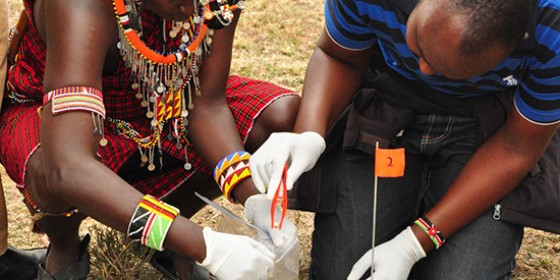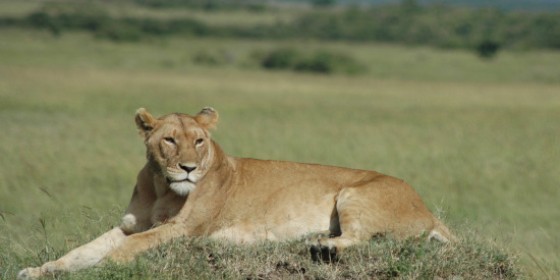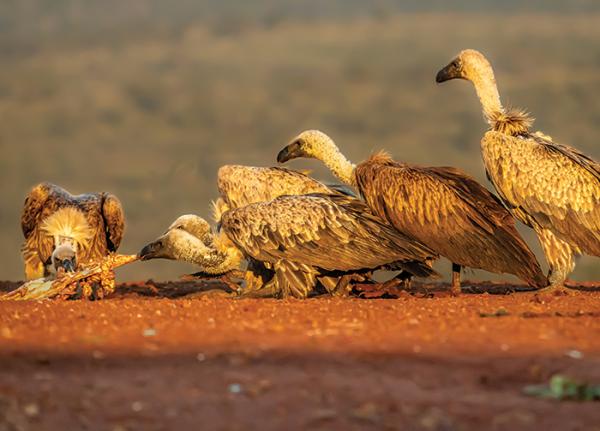More than any other continent, Africa is known for its circle of life revolving around massive herds of migrating animals hunted by fierce predators. Vultures are critical to that circle as efficient “eco-janitors.” Without them, diseases like rabies go unchecked, and the price is high—as demonstrated by a surge in human rabies deaths since south Asia’s vulture populations began to crash in the 1990s.
As demand for power, food, and material goods escalates throughout Africa, The Peregrine Fund has risen to meet new threats to vultures. Chief among them is wildlife poisoning. Livestock owners use poison to target predators like lions and hyenas, inadvertently killing vultures and other scavengers. Poachers deliberately kill vultures to avoid having their crime scene exposed by circling birds.
Threats to African Vultures

Munir Virani

Munir Virani
In 2018 we began the Coexistence Co-Op, a collaborative project with Lion Landscapes to reduce poisoning and the human-predator conflict that triggers it. We conduct community-based coexistence trainings to raise awareness about the dangers of poisoning and to teach locals how to build predator-proof bomas (corrals). One of our trainees helped to save a girl’s life when poison was used to attempt suicide. Our project in the Masai Mara has reduced vulture poisoning by over 50%.
We have collected poisoning data since 2005 and collaborated with the Endangered Wildlife Trust to create the African Wildlife Poisoning Database, which has recorded 272 poisoning incidents in 15 countries, and the deaths of more than 8,000 animals of 40 different species. However grim, this data-gathering is the crucial spark for funding and action.
We also tag and track vultures. Not only are we learning where vultures are likely to encounter poison, our data are also valuable to energy developers for the proper siting of new wind farms.
Vultures are among the few bird species for which tracking data are available in Kenya, giving conservation a scientific, credible voice on this rapidly-changing continent.
Another outstanding example of data-driven results is the African Raptor Databank (ARDB), a smartphone app used to record raptor sightings. Since 2014, ARDB has amassed more than 200,000 records from 38 African countries. ARDB documented declines of up to 80% in eight of Africa’s 10 vulture species, justifying their uplisting to Endangered or Critically Endangered. The status upgrades sounded the alarm internationally, prompting organizations to redirect funds and staff. This shared databank concept now serves as the basis of our Global Raptor Impact Network, so we can assess all raptor species worldwide.







